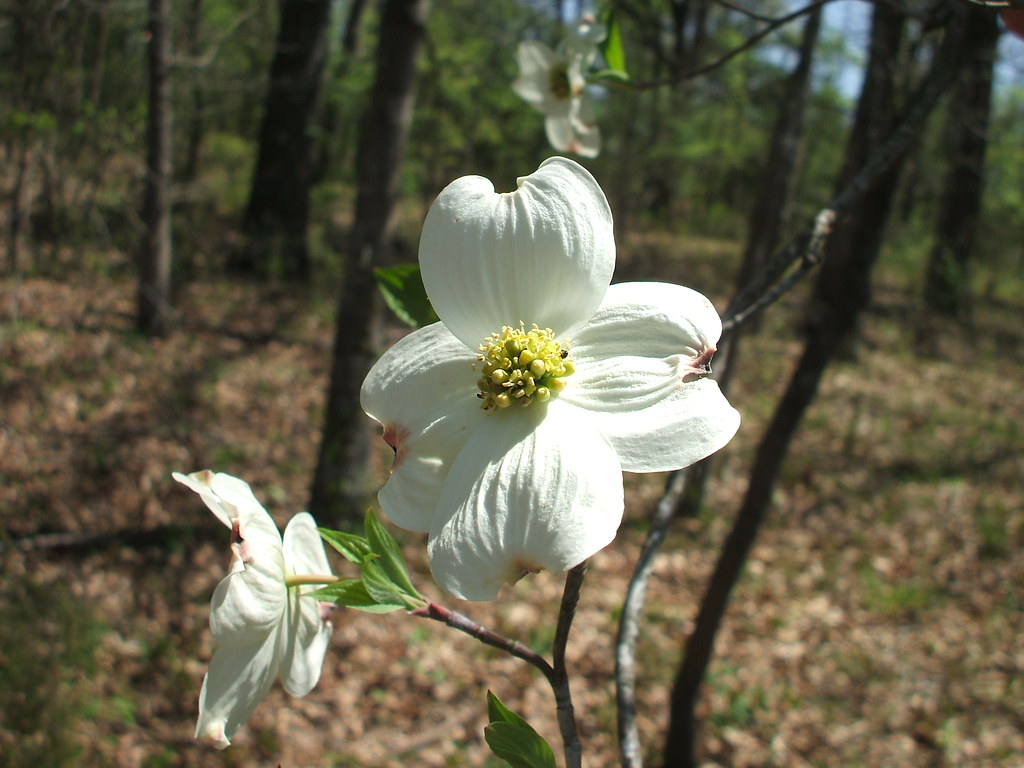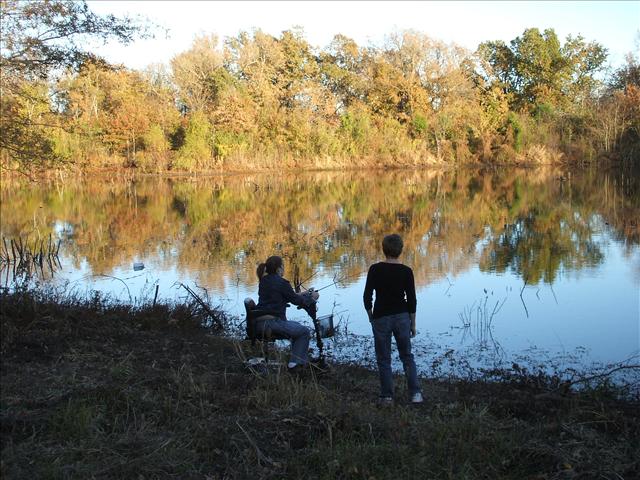Monday, January 26, 2009
Picking up speed
Well, things are really moving now. 100 cypress and 25 mayhaw trees are on their way from Arborgen. The dibble bar should make it before they do, and I should be able to get them in the ground before spring. If they ever call to say they shipped. I decided not to wait for the forester to get around to visiting and helping with a plan. A few areas need replanting to a very water tolerant species, and I wanted to get them in the ground now. The mayhaws are jsut for fun. Mmmm, I can already taste the jelly! I also put a deposit down on a sawmill from Mister Sawmill up in Flippin, AR. http://www.mistersawmill.com It should be ready in 2 weeks. I opted for the Model 21 with the 13HP Honda engine and 20' deck. It should handle almost anything I can find to put on it. I sure hope nobody offers me anything larger than I can handle. It will be used to cut some construction lumber for the property, unique wood to sell, and start a mobile sawmill business in the near future.
Sunday, January 18, 2009
Planting trees
I have been reviewing every book I can to find the types of trees to plant in some thinly stocked and open areas near the pond. It floods periodically and some of the areas have dead oak trees where high water suffocated them. I believe I am going to plant some cypress in the open areas. They should look nice from a pond standpoint. I am going to plant them as a crop tree with the thinnings going into my portablse sawmill as small boards for around the place. I may plant some tupelo to mix it up a little with the cypress. The thin areas have a few good trees I would like to leave. A tolerant or intermediate species is a must in this area so the options are a little limited. I came across a book that discussess sycamore as a crop tree. I believe I will try this in a test and see how they do. Sycamore does not naturally occur in groves and is usually in a mixed forest. It grows to 65' in 20 years on good sites, which I have. It is intermediate, so it should work well in the openings created when I cut out the malformed stems this year. I am going to research it some more since the trees will not be planted until next year. I may get a few cypress in this year since no clearing will be needed.
Saturday, January 17, 2009
Pond Boss regional meeting
Wow, what a group of people with ponds. I attended the regional meeting today hoping to learn a little about fish. I came away with some new friends and quite a bit of knowledge. We went to see two ponds that have not filled. I wish there was a way to redevelop the structure of a pond without removing the water. I discussed the ability to fluctuate the water levels with Bob Lusk. He told me the spawning habits of fish in these situations. The fish want to fill up the newly enlarged pond with a larger spawn. Lowering the pond then shrinks the size and concentrates the forage fish. This leads to larger predators due to increased food. In short, the largemouth bass get bigger faster and could get bigger overall. I believe a project may be in the works this summer so that I can try the principle. The flood would occur just before spawn to open up new spawning areas and flood terrestrial plants for cover. The water would be allowed to drop to the original pond level after the spawn to concentrate all of the new forage. A few bags of concrete, some 2x4's, and a pile of compacted clay in the back should be enough to dam the water in the spillway creek. If it works, then a stronger concrete structure with a penstock may take its place. A big thank you to Chris Steelman and Frank Peeples for having us at their places
Tuesday, January 13, 2009
Farming the Small Forest
A Guide for the Landowner by Laurence C. Walker. Ah, another book from my large library of forestry books. I think this is probably the best manual for someone to read as their introduction into forestry. It has the plainest english, the best layout, and is very clear and concise on all of the major issues. Sadly, it is out of print but is readily available used. The incentive programs are out of date, but they do show the reader the types of programs that could be available. Other chapters focus on management styles including their pros and cons. The book has a large administration section that covers inventory, plans and other info. Financial matters are also discussed including timber pricing, appraising land, and costs. Another section covers non-timber management considerations. Finally, the book goes into stewardship. Overall, I feel this is a great book for the new landowner or an aspiring forest owner because of the broad spectrum of forestry information and the topics on financials and land appraisal. Edit: Found a site selling it new: http://www.cspoutdoors.com/fasmfoguforl.html
Sunday, January 11, 2009
The Forest Manager
A Handbook for Farm Woodlot Owners and Others Who Manage Their Woodlands by Dr. Karl Dannecker and published by The American Forestry Association in 1939. The book discusses the topic I have been looking for in forestry books for a long time. Dauerwald, a German idea that treats the forest as a single living organism. The book is actually a translation of the original german text and omits sections specific to Germany, such as laws. It also makes some minor adjustments to adapt the original work to American forests. They actually weigh the options of every management type in the book. You can tell that the uneven aged selection method is favored in specific forms. By selecting the inferior first, you can build a better forest. The inability to regenerate intolerant species such as oak has been the main argument against selection management styles. This is the first book that outlines a method to completely avoid those problems. It is also the only book I have seen that focuses on forest soils as the key to a healthy forest. I highly recommend this book to anyone wanting to manage a healthy, biodiverse, uneven-aged forest and wants to keep oaks as a component. I believe the reason this method dropped out of favor is it was a German idea in the '30's so American did not want anything to do with it and the Germans actually stopped using it during the war because they needed all the material they could get.
Thursday, January 8, 2009
Mike Otto comes for a visit
Mike Otto, pond builder extraordinaire, came out to look over the pond dam to make sure everything was in order. I sure did not want to build anything that was going to be in the way of any repair work. I had tried to describe the pond over the phone, but he had to come in person. It is one of those "you need to see it to believe it" sort of situations. We walked around the entire pond. He figured out that the drain pipe is only for extreme emergencies and is fine. The main means of removing water is a carefully engineered rerouting of a seasonal creek. It drains directly into the pond until full. The water then becomes high enough to travel north into the creek bed, around the end of the dam, and south again in the original creek bed. No spillway needed and the chances of dam problems from it is virtually nonexistent. He also discussed putting in a gate instead of the culvert at the end of the dam for a foot more water in the pond. It could work to seasonally flood the shallow end for duck habitat. One other important detail he informed me about was trees on the dam. He said they are no problem on my dam. We found 3 very large stumps, and they are not producing leaks. If you need a pond dug in north Texas or have a question about one, then Mike Otto is the man to see: http://ottosdirtservice.com/default.aspx Overall, it was a productive day learning what I should and should not do, and even got a little work done trimming trees around the pond.
Sunday, January 4, 2009
Earth Ponds book review
The book is written by Tim Matson and has seen several editions. I have the second edition. The book starts out in the first half just telling the story of the authors experiences with his and neighbors' ponds. It is entertaining in these chapters, but not very helpful. The second half of the book is the real meat. He goes into the building, maintenance, and restoration of ponds. A little of the info is outdated. He talks about draglines a lot which are not used so much anymore. The information is also focused on New England and traut ponds quite a bit. I would recommend this as a secondary book for someone reading up on ponds. Bob Lusk's books through the Pond Boss magazine site are better, in my opinion.
Friday, January 2, 2009
A day to play!
I managed to get out out to the woods just to have some fun. No deer, so the freezers going to be a bit empty. A lot of wildlife was out and about, though. Squirrels, a couple of ducks, a big hawk, and lots of little migratory birds. I made sure I searched for some freshwater mussel shells fo identification and found several. These are listed as a rare species by TPWD and can make a property eligible for the LIP program: http://www.tpwd.state.tx.us/landwater/land/private/lip/ . I also went in to the woods to inspect an odd couple of trees I had not identified. They look like Western Soapberry, but I will need to wait for spring to check the leaves. One more species of native to add to my biodiversity list. Things are looking good to move forward with my conservation plans.
Thursday, January 1, 2009
Management and Inventory of Southern Hardwoods
Another quick review of a book. This book is from the US Deparment of Agriculture Forest Service and is their agriculture handbook no. 181. It was written by John A. Putnam, George M. furnival, and J.S. McKnight in 1960. The handbook has chapters on southern forests including types, preliminary managment, advanced managment, and inventory. There are some great photos and diagrams withn the book. It also has an excellent table listing many of the hardwoods and a few softwoods found in the South with a lot of info about each. The giant tree table at the back is also helpful, though a little confusing until you get used to it. The handbook is very helpful for anyone, even those in other parts of the country to some extenet. As usual, some of the harvest and management information can be a little dated because of the age of the book, but other more recent books specialize in this. I recommend it if you can find one at a decent price used because of the overall picture and helpful tidbits. You can also download it by searching at the Forest Service Treesearch website (which was not working at this time): http://www.treesearch.fs.fed.us/
Subscribe to:
Posts (Atom)

